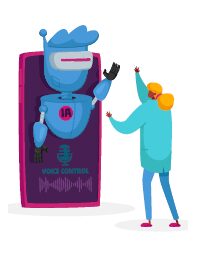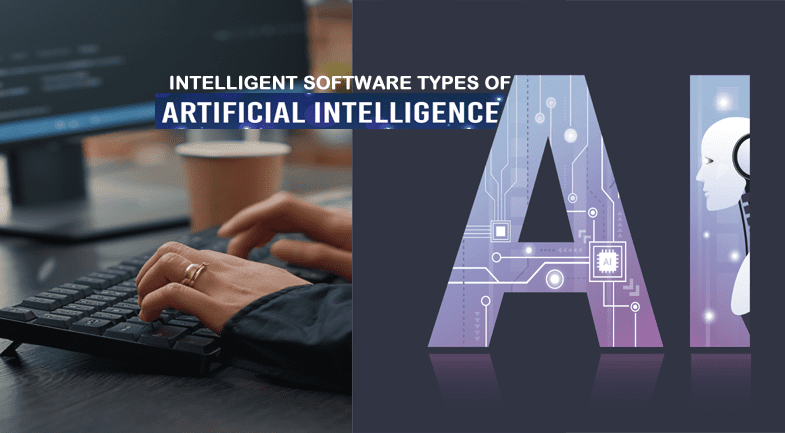Introduction
“Artificial intelligence would be the ultimate version of Google. The ultimate search engine that would understand everything on the web.” – Larry Page
Today the world is evolving rapidly and one of the main reasons for this is the way humans are evolving according to the current situations. Machines and Intelligent software have mostly taken over the world and made human work tremendously easier and swifter.

Artificial intelligence is one of humanity’s most complex and amazing creations to date. Not to mention the fact that the field is still largely unexplored, which means that every amazing AI application we see today is merely the tip of the giant AI iceberg. While this fact has been stated and reiterated numerous times, it remains difficult to gain a comprehensive perspective on what is the potential impact of AI in the future. The reason for this is the revolutionary impact that AI is having on society, despite the fact that it is still in its early stages of development.
People are concerned about the inevitability and proximity of an AI takeover due to AI’s rapid growth and powerful capabilities. Furthermore, the transformation brought about by AI in various industries has led business leaders and the general public to believe that we are on the verge of reaching the pinnacle of AI research and realizing AI’s full potential. Understanding the types of AI that are possible and those that exist now, on the other
hand, will provide a clearer picture of existing AI capabilities and the long road ahead for AI research.
AI is mainly classified into two categories. One type is based on categorizing AI and AIenabled machines based on their resemblance to the human mind and ability to “think” and possibly “feel” like humans.
There are four types of AI or AI-based systems, according to this classification system: reactive machines, limited memory machines, theory of mind, and self-aware AI.
1. Reactive Machines
These are the most primitive versions of AI systems, with extremely restricted capabilities. They mimic the human mind’s ability to respond to various types of stimuli. Memorybased functionality is not available on these devices. This means that such robots cannot use previous experiences to inform their current behaviors, i.e., they lack the ability to “learn.” These devices could only respond to a restricted set or combination of inputs automatically. They cannot be used to improve their operations by relying on memory. IBM’s Deep Blue, which defeated chess Grandmaster Garry Kasparov in
1997, is a well-known example of a reactive AI machine.

2. Limited Memory
Limited memory machines are machines that, in addition to having the characteristics of fully reactive machines, may make decisions based on historical data. Almost all present applications that we are aware of fall into this category of AI. All modern AI systems, including those that use deep
learning, are trained using vast amounts of training data, which they store in their memory to construct a reference model for solving future issues. For example, an image recognition AI is taught to name items it scans by using hundreds of images and their labels.
When such an AI scans a picture, it uses the training photos as references to understand the contents of the image supplied to it, and it classifies fresh images with increasing accuracy based on its “learning experience.”
Almost all current AI applications, ranging from chatbots and virtual assistants to self-driving cars, are powered by limited memory AI.

3. Theory of Mind
While the preceding two categories of AI have been and continue to be abundant, the next two types of AI exist only as an idea or as a work in progress for the time being. The next level of AI systems that researchers are actively developing is theory of mind AI. A theory of mind AI will be able to better understand the creatures with whom it interacts bydetermining their needs, emotions, beliefs, and mental processes. While artificial emotional intelligence is now a burgeoning industry and a focus for prominent AI researchers, obtaining Theory of mind level AI would necessitate advancements in other areas of AI as well. This is because, in order to genuinely grasp human needs, AI computers must recognise humans as individuals whose minds may be changed by a variety of factors, hence “understanding” humans.

4. Self Aware
This is the final step of AI development, which exists only in theory at the moment. Self-aware AI is an AI that has evolvedto be so similar to the human brain that it has gained selfawareness. Developing this form of AI, which is decades, if not centuries, away from becoming a reality, is and will always
be the ultimate goal of all AI research. This form of AI will not only understand and elicit emotions in individuals with whom it interacts, but will also have emotions, wants, beliefs, and maybe desires of its own. This is the type of AI that technology skeptics are concerned about.
This is because, once self-aware, the AI would be capable of possessing thoughts like self-preservation, which might either directly or indirectly mark the end of humanity, as such an entity could easily outmaneuver any human being’s intellect and create sophisticated schemes to take over humanity.
The alternative classification method that is more commonly used in technology parlance is the classification of technology into Artificial Narrow Intelligence (ANI), Artificial General Intelligence (AGI), and Artificial Superintelligence (ASI) (ASI).

5. Artificial Narrow Intelligence (ANI)
This form of artificial intelligence encompasses all extant AI, including the most intricate and competent AI yet constructed. Artificial narrow intelligence refers to AI systems that can only do a single task independently while exhibiting human-like capabilities. These machines can only accomplish what they are designed to do, giving them a very limited or narrow range of capabilities. These systems relate to all reactive and limited memory AI, according to the aforementioned classification approach. ANI encompasses even the most complex AI that employs machine learning and deep learning to teach itself.
6. Artificial General Intelligence (AGI)
The ability of an AI agent to learn, sense, understand, and function completely like a human being is referred to as artificial general intelligence. These systems will be able to build various competences on their own, as well as make linkages and generalizations across domains, significantly reducing training time. By mimicking our multifunctional capacities, AI systems will be just as capable as humans.
7. Artificial Superintelligence (ASI)
The development of Artificial Superintelligence (AGI) will very certainly signal the apex of AI research, as AGI will be by far the most capable forms of intelligence on the planet. ASI, in addition to mimicking human intellect, will be significantly superior at everything they do due to vastly increased memory, faster data processing and analysis, and decision-making skills. The advancement of AGI and ASI will result in a scenario known as the Singularity. While the prospect of having such powerful tools at our disposal appears tempting, these devices may endanger our existence or, at the very least, our way of life. At this time, it is difficult to imagine the situation of our planet when more advanced varieties of AI become available. However, it is evident that there is a long way to go because the current status of AI development in comparison to where it is anticipated to go is still in its infancy. For those who have a pessimistic view of AI’s future, this suggests that it’s a little too early to be concerned about the singularity, and there’s still time to secure AI safety. And for those who are optimistic on AI’s future, the fact that we’ve only scratched the surface of AI research makes the future even more fascinating.

